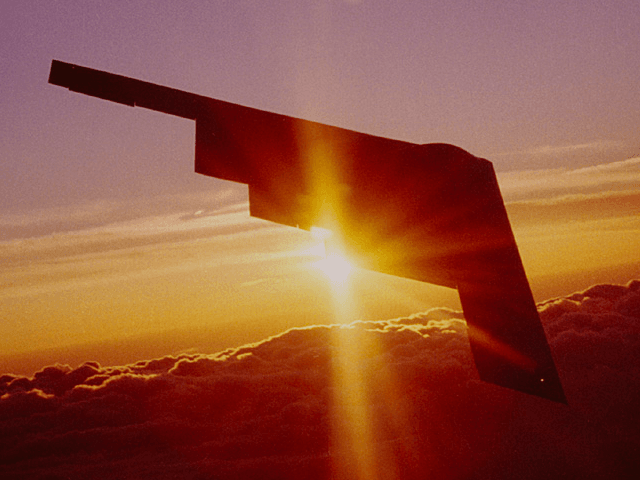With the aging B-2 Stealth Bomber’s design dating back to the 1970 disco days of the Carter Administration, the Air Force just opened a competition to build the next strategic bomber. The “B-3” pits teams from Northrop Grumman that built the B-2 versus Boeing and Lockheed Martin, which built the B-52 bomber and F-35 strike aircraft. No matter who wins the bid, the plane will be designed in California’s Antelope Valley.
As Secretary of Defense Chuck Hagel was leaving his position in January, he warned, “I think the long-range strike bomber is absolutely essential to keep our deterrent edge as we go into the next 25 years.” Hagel has paved the way for Congress to fund development and production of 80–100 next generation strategic bombers that are tentatively budgeted at $550 million apiece. But over the term of the procurement plan, the cost of each plane will more than quadruple.
Northrop Grumman led the team that designed and built the 21 B-2s that went operational in 1997 at an official cost of $737 million per plane. But the non-partisan U.S. General Accounting Office put the cost of the plane–with development, engineering and testing–at $2.1 billion per B-2. With each plane costing another $200 million in spare parts, equipment, retrofitting, and software support, the all-in cost for each B-2 jumped to over $2.3 billion.
Both competing B-3 design teams have told local Palmdale officials that they intend to do a substantial amount of the design work in top secret leased facilities a few miles south of Edwards Air Force. The top secret base is officially named Air Force Plant 42, but it is known in the stealth technology world as the “Dreamland Resort.”
Most Americans are familiar with the top-secret Area 51, where radar-avoiding planes are tested. But the 5,840 acre Dreamland Resort site houses the labs and prototype facilities where the top U.S. aerospace design gurus from Lockheed Martin, Northrup Grumman and Boeing work. Operational aircraft that were designed in “Dreamland” include the B-1 Lancer, B-2 Spirit, F-117 Nighthawk, F-35 Lightning and most high end drone aircraft.
California has been one of the slowest states to recover high-paying manufacturing jobs. Since February 2010, U.S. manufacturing employment has increased at a rate of 6.7%, with low-tax Indiana and South Carolina seeing gains of 15% or more. By contrast, California manufacturing has grown at about 1% over the same period.
To insure that California’s abusively high corporate and income taxes didn’t convince the strategic bomber design companies to move the work from the Antelope Valley to low tax states, Sacramento lawmakers passed bills last summer that gave the defense contractors hundreds of millions of dollars in potential tax breaks.
According to the Los Angeles Times, local politicians are ecstatic about the prospects for a new strategic bomber program. Palmdale Mayor James Ledford has indicated that Northrop would create 1,500 jobs to build substantial parts and rival team Boeing and Lockheed Martin planned to add 700 jobs. Mayor R. Rex Parris of neighboring Lancaster, which has a 10.7% unemployment rate, said “It would be the answer to all our prayers,” if the bomber development is approved.
Secretary Hagel reportedly said that America’s nuclear triad is “always about strategic deterrence.” He emphasized that a new bomber is one of the military’s top three priorities, along with fielding the new F-35 Joint Strike Fighter and the KC-46 Pegasus refueling plane.
Hagel added, “It is about staying ahead, technology-wise, of our adversaries–those who would want to do great damage to this country and our way of life and our allies.”

COMMENTS
Please let us know if you're having issues with commenting.